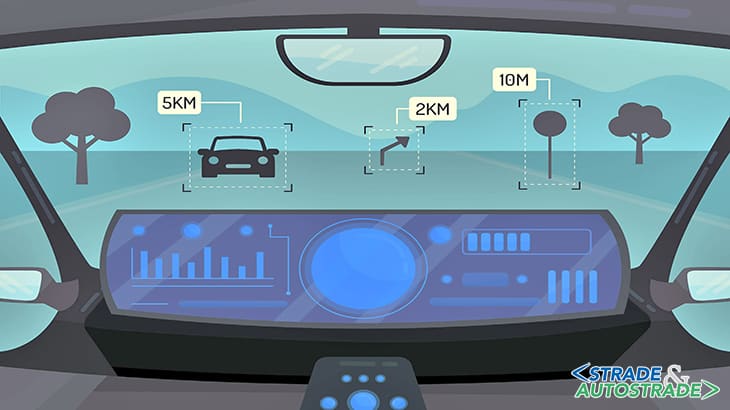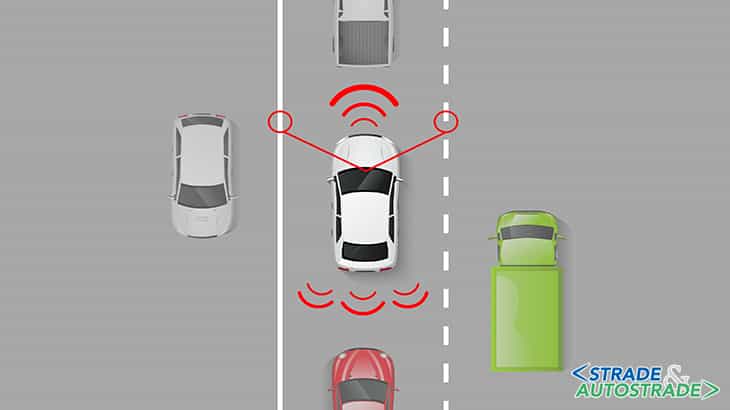![]() Per la versione in Italiano: https://www.stradeeautostrade.it/its-smart-road/un-ecosistema-nazionale-per-lerogazione-dei-servizi-c-its/
Per la versione in Italiano: https://www.stradeeautostrade.it/its-smart-road/un-ecosistema-nazionale-per-lerogazione-dei-servizi-c-its/
“The Ministry of Infrastructure and Transport is starting the design and implementation of a national ecosystem of C-ITS services, providing for the development of one or more prototypes of an open and evolutionary platform, for the provision of valid C-ITS services”: this was the statement by Undersecretary Giancarlo Cancelleri, made in the Chamber on 1 October, when answering to a question by Hon. Grippa and Marino on the digital transformation of national road infrastructures.
Good and important news, which suggests a convincing MIT strategy: to create the conditions for the process towards the realization of the C-ITS services to continue, limiting the possible delays resulting from the blockade of the Regulation proposed by the Commission and addressing one of the main issues: the national structures of interaction and collaboration between the various actors.
The announcement of the Undersecretary is then enriched by some important notes. Decree 70 of 28 February 2018 (the so-called “Smart Road” Decree) is recalled, recalling that C-ITS ” day 1” services are among the mandatory services, but it is noted that the “strong fragmentation of the management responsibilities of the Italian road network” involves the need for coordination.
Finally, some indications are provided: “The various characterizing elements will be included in the ecosystem, such as, for example, a collection of support tools for the realization of the aforementioned C-ITS services and for the actors involved – as a means, among other things, of sharing and gathering information – both for the Technical Observatory and for the management of related activities.

This ecosystem will host the services provided by the various operators, giving priority to the services covered by the national pilot projects, and will be neutral with respect to communication technologies, paying particular attention to aspects that require strict rules of cooperation between the various actors.
The technical solution for the platform will be chosen by analyzing the numerous national and European experiences; the outcomes will remain the property of MIT, which will also make it usable in reuse with ways and times that will be defined later.
The communication to Parliament, although concise and devoid of detailed technical information, allows – as can also be seen from the few quotes mentioned above – to outline the possible characteristics of the initiatives and to clarify their contents.
Let’s start from the motivations. Studies and experiments have created, in the past decade, a sufficient knowledge and consensus base to start large-scale realizations.
It is still true that the decision on the technology for short range communication is still pending (the reader is referred to previous interventions and on this magazine) but the way is open for the creation of structures able to support and convey new services, incorporating – today and tomorrow – the short-range technologies that will prevail.
The Ministerial Decree 70/2018, having taken note of the progress of development, has made C-ITS “day 1” services mandatory for the primary network: the services must be carried out progressively by the Operators (starting from… today…).
Unfortunately, as the communication notes, concrete implementation meets an obstacle: the fragmentation of the management of the road network, which entails special requirements, which can be grouped into at least two categories:
- the user must receive the services continuously, without interruption due to management differences;
- all road Managers, even the least equipped organically and technically, must have the availability of “standardized” tools, regional and national interaction and collaboration structures, organizational and technical aids.
To date, there are no proposals on the market for standard components (apart from the short-range solutions based on the G5) or for standard platforms. Finally, we must also remember that the aforesaid Ministerial Decree 70/2018 delegates some support actions to the Observatory at MIT (e.g. “feasibility studies, preparation and guidance to the activation of any process aimed at the implementation of a national platform, support to the provision of C-ITS services “).
These are the main reasons, which qualify the initiative not only as motivated and mature, but in a certain sense, as due following the regulatory provision of the aforementioned Ministerial Decree 70/2018.
The vision of MIT, as it appears from the communication, is a ”something” that is indicated as a national “ecosystem” of C-ITS services and that we could define, in an alternative way, as a “support platform, interaction and collaboration between Managers, service providers, users, authorities “for the coordinated and standardized implementation of C-ITS services.
To better understand what it is, it is worth remembering, albeit briefly, some characteristics and some basic requirements for C-ITS services, among those that interest our discussion.
The user must be able to receive service messages both through ”short range” (if the network is equipped and/or if other vehicles equipped are within range) and from “long range” (by the Operator and/or by service providers).
The various messages received while traveling (from short/long haul and from various operators) must be consistent, superimposable and must “cover” the journey (e.g. a message about an accident on the motorway network must reach – if relevant – also vehicles that are entering the motorway and are still on the external network).
From the point of view of the road manager – required by art. 14 of the Highway Code as well as by DM 70/2018 to provide the services – this requirement requires, in a nutshell:
- the installation of units (outstations) able to communicate with vehicles (with the standard that will emerge from the market);
- the connection of these units to the road management center (to exchange messages, manage the units);
- the installation of a software capable of managing all messages, creating specific messages generated by events on its network, extracting information content from messages coming from the field and interacting with proprietary management systems;
- the communication (optional) of long-range messages – if the Operator also wants to act as a long-range service provider;
- The standardized communication with operators of the interacting road networks;
- the communication (on a voluntary or contractual basis – for the purpose of giving maximum diffusion to the free C-ITS services) of content or messages to long-range service providers.
The “ecosystem”, or “platform” as you wish, will give two opportunities to Operators and Service providers. At firts they can “hook up” to the platform to cover the points 3, 4, 5 and 6 above (using the “basket” of solutions developed by the MIT or connecting to all the platforms created).

Then they will be able to coordinate on a national basis, taking advantage of the knowledge, information and regulatory support of the MIT, which will deal with the “governance” of the process.
The actions mentioned with bullet points 1 and 2 will in any case remain under the autonomous responsibility of the Road Operators, as well as the provision of services to users for service providers.
Finally, one can mention two observations on long-range communications: they are certainly essential for C-ITS services to guarantee the necessary territorial coverage and accelerate development, but they must respect some specific requirements.
They must ensure that the user can, at any time, choose the supplier at will without being obliged to “jump” between different suppliers while changing road network. Moreover, only the relevant messages – at a given moment – for each traveler must be put online, under penalty of unacceptable and unsustainable overload for the communication networks. Finally, services must respect precise rules on privacy and cybersecurity.
In this regard, we recall that the proposed – and blocked – Regulation had accepted the recommendations of the EU Data Protection Working Party (Oct. 2017). It stated that ”pending a new regulatory framework suited to the characteristics of the C-ITS, today not covered by the GDPR, data collected should not be reused for other purposes, such as commercial purposes or as a new resource for enforcement, unless this is done on the basis of a legal act”.
Moreover it added pseudonymisation rules aimed at avoid user traceability. Considering cybersecurity, it imposed a system based on the public key – PKI – with frequently changed security certificates and with all the support structures made available by the Commission.
One can expect that these rules will also be enforced in future Rules. The support action of MIT will also cover these aspects, generating standardized and available solutions.
An “ecosystem” that respects this vision is feasible today, with mature technologies and with widely shared requirements: the various research and experimentation projects of the last ten years have set the basis (for those who want a deepening of experiences, requirements and possible technical solutions, we refer – by way of example – to C-Mobile – D3.1 – Reference Architecture).
The ecosystem will be technologically neutral (it does not enter the choice of communication technologies) and does not interfere – if not positively – with the market: not only does it not compete with the market offer (both on road management systems and on user services).
On the contrary, it creates the conditions for the market to expand rapidly and motivates new investments in urban, interurban and motorway traffic management (on which we are unfortunately deficient).
Indeed, the ecosystem will exploit the availability of new data from vehicles, the possibility of influencing behavior in a widespread and continuous way, the opportunity to provide updated, credible and useful information to users.
The vision of MIT
The vision of MIT, as expressed in the communication to Parliament, is certainly acceptable. We can only add that an “ecosystem” is efficient and positively evolutionary if it is inclusive.
In our case, it is absolutely necessary – in our opinion – that stakeholders are immediately involved in order to verify consent, adapt vision, allow to the experimental and demonstration projects already in progress to foresee the use of the various platforms, allow those who are planning new interventions to calibrate their projects and investments, encourage collaboration with service and technology suppliers, use the skills available to create Regulations and “best practices ” and spreading knowledge.
We are confident that the creation of a collaborative environment, capable of involving all the actors, will multiply the efficiency of the activities of the MIT object of the announcement in Parliament.
![]() Per la versione in Italiano: https://www.stradeeautostrade.it/its-smart-road/un-ecosistema-nazionale-per-lerogazione-dei-servizi-c-its/
Per la versione in Italiano: https://www.stradeeautostrade.it/its-smart-road/un-ecosistema-nazionale-per-lerogazione-dei-servizi-c-its/
> Se questo articolo ti è piaciuto, iscriviti alla Newsletter mensile al link http://eepurl.com/dpKhwL <

